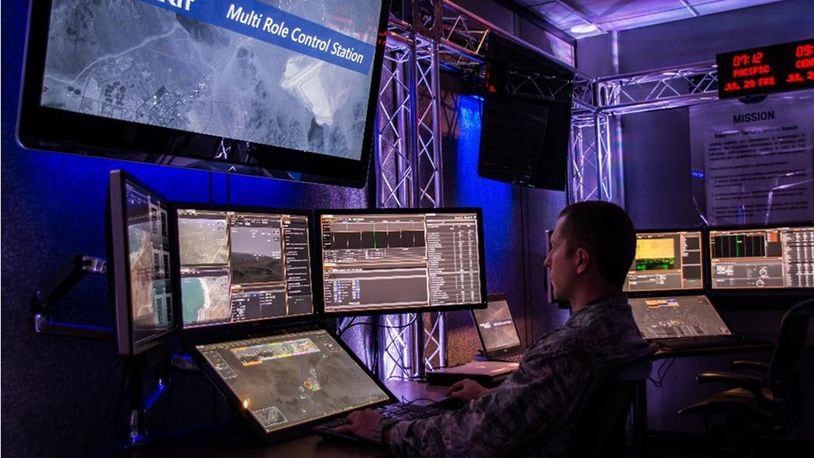Typically, software from the manufacturer is proprietary, meaning the customers can’t modify the software source code in order to customize its capabilities. This is one of the reasons the Air Force had an interest in developing a new non-proprietary software capability that can work with multiple groups and brands of UAVs and be easily modified based on operator need. Most importantly, the software is needed to allow operators to maintain multi-vehicle and sensor control.
Engineers in the 711 HPW’s Supervisory Control & Cognition Branch developed the software with a focus on improved human/machine interface and adaptability. The software package offers multi-role, human-machine teaming and an advanced simulation and training component. It has been used in a variety of Air Force training and research & development activities.
“The Vigilant Spirit Control Station, also known as VSCS, was designed with the user experience in mind. We wanted it to be user-friendly, adaptable, and cost effective. It’s providing a unique advanced capability for future DOD UAV systems,” said Greg Feitshans, the chief engineer and program director for the software.
Because the source code is able to be modified depending on operator need, the software is an important research and development tool for both the Air Force and commercial UAV companies. As a result the 711 HPW has entered into five information transfer agreements, also known as ITAs, with different commercial companies, with several more ITAs in the pipeline. The agreements allow researchers from the companies to use the software while protecting the Air Force’s intellectual property rights.
An ITA with Bihrle Applied Research Inc. has become essential for continued testing of the integration of VSCS and the Jointly Optimal Conflict Avoidance sense and avoid algorithm. A team from Bihrle Applied Research is working with the Air Force Research Library’s Aerospace Systems Directorate on the project.
“Having access to the software allows our algorithm development team to operate and observe the algorithm’s dynamic interaction with the software controls and display functions in real time and under different encounter scenarios,” said Jacob Kay, the director of sense and avoid technologies at Bihrle Applied Research. “This first-hand experience with VSCS greatly expedites our development, testing, and refinement process.”
“By allowing government and commercial users to enter into such ITAs, VSCS is more likely to be adopted as a preferred software for controlling multiple UAVs,” said Dr. James Kearns, the 711 HPW Technology Transfer Program manager. “The 711 HPW also benefits by retaining control of its software while having access to any software enhancements developed by users under the agreements.”
For more information on ITAs or other technology transfer opportunities, call 937-904-9830.
About the Author
